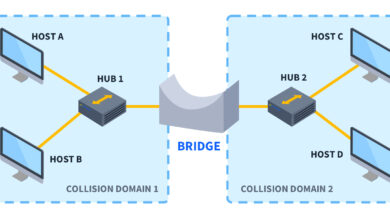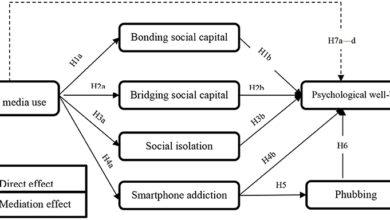Understanding SSIS-950: An In-Depth Guide

In the world of data management and integration, few tools are as important as SQL Server Integration Services (SSIS). Among the many components and issues associated with SSIS, the error code SSIS-950 stands out as one that professionals must understand to ensure smooth data workflows and error-free execution. This article will explore what SSIS-950 means, its causes, solutions, and ways to prevent it from impacting your data integration tasks. Whether you’re a novice or a seasoned professional, this guide will provide you with the tools to troubleshoot and resolve this issue efficiently.
What is SSIS-950?
The error code SSIS-950 typically refers to an issue encountered when running SSIS packages. It signifies an error within a task or component of the integration process. This could be related to a variety of factors such as incorrect configuration, missing dependencies, or issues with source and destination databases. Understanding SSIS-950 is key for troubleshooting and ensuring your data integration tasks complete without a hitch.
Common Causes of SSIS-950
There are several reasons why you might encounter SSIS-950 while working with SQL Server Integration Services. Here are some of the most common causes:
- Connection Problems: SSIS-950 may occur if there’s a problem with the connection to a database or file source. Incorrect connection strings or expired credentials can trigger this error.
- Component Failures: If an SSIS task or component within the data flow encounters a failure—whether it’s a data source, transformation, or destination—the SSIS-950 error may appear.
- Corrupt or Missing Data Files: A missing file or a corrupt data file can prevent SSIS from completing its tasks, leading to the SSIS-950 error.
- Invalid Configuration: If the SSIS package is misconfigured, especially with regard to source and destination connections, it may result in the SSIS-950 error.
- Permissions Issues: Inadequate permissions for files, databases, or network resources may also be a root cause of the SSIS-950 error.
Understanding these causes will help you identify potential issues quickly and resolve them without much hassle.
How SSIS-950 Impacts Your Data Integration Projects
When you encounter the SSIS-950 error, it can disrupt the flow of your data integration tasks. Data loading, transformation, and transfer might fail, affecting business processes that rely on timely data delivery. This issue can result in delays, and missed deadlines, or even compromise the integrity of the data being processed.
To avoid these disruptions, it’s critical to address the SSIS-950 error quickly. If ignored, the error could cascade into more serious issues, including data corruption or incorrect processing.
Key Steps for Troubleshooting SSIS-950
When you run into the SSIS-950 error, you’ll want to go through a systematic troubleshooting process. Here’s how to get started:
Check Connection Settings
A common culprit behind SSIS-950 is a connection issue. Begin by checking your connection settings to ensure they are correct:
- Database Credentials: Ensure the credentials used for the database connections are valid and have the necessary permissions.
- Connection Strings: Double-check the format of your connection strings. Ensure they follow the correct syntax for the database or server you are working with.
- Network Availability: If your data sources are remote, check the network connection to ensure that the necessary resources are accessible.
Review Task and Component Settings
- Data Flow Components: Review the settings for each data flow component, particularly the source and destination components. Ensure that there are no conflicts in data types or incompatible transformations.
- Component Properties: Make sure that all required properties for each element are properly set. An improperly configured component can lead to SSIS-950 errors.
Analyze Error Logs and Details
- Review Error Logs: SSIS provides detailed logs that can help pinpoint exactly where the error occurred. Use these logs to identify the failing task or component.
- Look for Specific Error Codes: Check for any additional error codes associated with SSIS-950. These can offer more insight into the underlying issue.
Verify Permissions
- File and Database Permissions: Confirm that the SSIS package has the appropriate permissions for all required files and databases. Lack of access rights is a frequent cause of failure.
- Service Account Permissions: If your SSIS package is running under a specific service account, ensure that the account has sufficient privileges.
Test Data Sources
- Validate Data: Sometimes, malformed or unexpected data can cause tasks to fail. Ensure that your data sources contain the correct data format and that no unexpected characters are present.
- Check for Missing Data Files: If you are dealing with external files, verify that all necessary files are in place and not corrupted.
Common Fixes for SSIS-950 Errors
Once you’ve identified the root cause of the SSIS-950 error, there are a variety of solutions that you can try to resolve. Below are some of the most effective fixes:
Update or Reconfigure Connections
If the issue is related to database or file connections, you may need to update or reconfigure the connection settings. This includes:
- Correcting the connection strings.
- Updating expired credentials.
- Reestablishing connections to network resources.
Repair or Reinstall Components
Sometimes, SSIS components or even the SQL Server Integration Services (SSIS) tool itself can become corrupt. If this is the case, you can try:
- Repairing the SSIS installation via SQL Server Setup.
- Reinstalling the necessary components to fix any issues.
Recheck Package Configuration
Double-check the package configuration and reconfigure any misconfigured components. This might involve adjusting settings for data flow components, transformations, or source/destination connections.
Clear Cache and Rebuild the Package
If SSIS-950 persists, clearing the cache and rebuilding the SSIS package may resolve any lingering issues. This can be done through the SSIS design interface, where you can refresh the package settings and recompile it.
Preventing SSIS-950 Errors
While encountering the SSIS-950 error can be frustrating, there are proactive steps you can take to minimize the chances of it occurring in the first place. These preventive measures can help you maintain a smoother data integration process.
Keep Your Environment Updated
Ensure that your SSIS tools, SQL Server, and related components are always up to date. Regular updates contain important bug fixes and improvements that can prevent issues like SSIS-950 from occurring.
Implement Version Control
If you’re working on large or complex SSIS packages, consider implementing version control to manage changes effectively. This can help track modifications and prevent configuration errors.
Monitor Connections and Permissions Regularly
Regularly check your connection settings and permissions to ensure that nothing has changed. This will help prevent errors caused by broken connections or insufficient access rights.
Use Error Handling and Logging
Implement robust error handling and logging mechanisms within your SSIS packages. By logging all errors, you’ll be able to quickly identify the exact cause of SSIS-950 and take appropriate action.
SSIS-950 in Real-World Applications
The SSIS-950 error often occurs during large-scale data integration projects where numerous components are involved. For instance, in a data migration task from one system to another, an SSIS package might fail with this error if any connection or configuration issues are overlooked.
Businesses heavily relying on SSIS for ETL (Extract, Transform, Load) tasks should adopt a proactive approach to handling these errors, reducing downtime and improving efficiency. By focusing on proper setup, regular monitoring, and thorough testing, organizations can avoid many of the common pitfalls that lead to SSIS-950.
Conclusion
The SSIS-950 error can be a significant roadblock in the data integration process, but with the right troubleshooting approach, it can be resolved efficiently. By understanding its causes, following best practices for SSIS configurations, and implementing preventive measures, you’ll be well-equipped to keep your data integration workflows running smoothly.
Remember, no one likes to run into errors, but every problem is an opportunity to learn and improve your processes. So, whether you’re dealing with SSIS-950 today or down the road, now you know how to handle it with confidence. Happy troubleshooting!
You may also read:
Crackstreams NBA: A Comprehensive Guide to Streaming NBA Games





